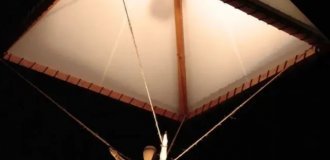If you don't like flies, then be glad you don't live in Africa. After all, it is there that the most dangerous tsetse fly in the world lives, which is a carrier of such deadly diseases as sleeping sickness (in humans) and nagana (in animals).


Tsetse flies live in tropical and subtropical regions of Africa. They choose the best areas - tropical rainforests and fertile lands along river banks, where local residents could engage in farming. But for people, such a neighborhood can lead to dire consequences.
There are 21 species of this fly, but only a few of them are carriers of sleeping sickness. These are G. palpalis, G. morsitans and G. brevipalpis. The rest are dangerous only for wild and domestic animals.

At first glance, this is an ordinary fly, which in appearance is not much different from its European relative. But still there is one obvious difference - the ends of their wings in a calm state fit tightly to each other. Their piercing proboscis is also a little longer and stronger, because they have to pierce not only thin human skin, but also the thick skin of Kaffir buffalos, African antelopes, and sometimes elephants. The tsetse fly is gray-yellow in color. On the upper side of the abdomen there are 4 longitudinal dark brown stripes.

Unlike mosquitoes, in which only females drink blood, both females and males adhere to the “bloody” diet of tsetse flies. In order to get to the precious vessel, they have tiny sharp teeth at the end of the proboscis, with which they drill through the skin and wall of the blood vessel. Then they inject their saliva, which contains substances that prevent blood clotting, into it and begin to suck the blood. The fly's skinny abdomen immediately increases in size.

Catching and killing this fly is not so easy. She flies quickly, purposefully and silently. If you slam it or stun it, the fly, even with broken wings, will still get to the desired warm prey and strives to bite again. Therefore, some Africans catch them with their hands and crush them between their fingers, just to be sure.

It is very difficult to remove it from its favorite habitats. Over the course of 150 years, various measures have been developed to destroy this flying enemy. Some of them were simply monstrous, for example, the complete extermination of animals in the habitat of the tsetse fly or the cutting down of all trees. And one of these events was carried out. It was believed that if all wild animals were exterminated, the tsetse fly would have nothing to eat and would die out.

In the early 1930s, mass shooting of wild animals began in the region of Southern Rhodesia. In 1932, about 36.5 thousand of them were destroyed, among which were rare species. Residents of the country were in shock. Also on about. Principe, off the western coast of Africa, eradicated all wild pigs in the 1930s. Such terrible measures only helped for a while.

We are used to the fact that all flies lay eggs. But tsetse reproduce in a completely different way. They are viviparous. Their larvae are born ready to pupate.

The female tsetse fly mates only once in her life, and then gives birth to one larva 2-3 times a month. “Birth” occurs on moist soil. After which the larvae immediately begin to burrow into the ground and form brown pupae, from which mature flies emerge a month later. During its entire short life, the fly gives birth to 8 to 12 larvae.

Taking advantage of the fact that the female mates only once, scientists have developed a very effective way to combat the spread of this insect, which is still used today. They raised millions of flies and selected males. Then they were sterilized using gamma irradiation and released into the wild. After contact with such a male, the female thinks that everything is in order and no longer allows other males to approach her.

Now let's talk about what sleeping sickness is. In relation to animals, this disease is called nagana. Its main cause is trypanosome parasites. This may surprise you a little, but the natural carriers of these parasites are wild African animals: antelopes, buffalos, hyenas, warthogs, etc. Many of them have already developed immunity to this disease, and it does not pose a serious threat to them. But imported domestic animals die in the thousands. Flies are only carriers.

Human trypanosomes, which cause sleeping sickness, are transmitted only from person to person. This disease is accompanied by fever, weakness, headache, and disruption of the sleep-wake cycle (hence the name). The immune system is affected first, and then the nervous system. After a few months, the person becomes severely exhausted and falls into a coma. Without proper treatment, a person may die.

There are medications for this disease, but often taking them is accompanied by severe side effects (nausea, vomiting, arterial hypotension, etc.). In addition, there is often not enough for all sick people.
There are a couple of interesting facts about the tsetse fly. The first is that it attacks any moving warm object, even a car. If you get out of the car, the flies will still land on the car first and not on the person. And the second - the zebra - is the only animal that the tsetse fly will never attack, since it perceives it only as a flashing of black and white stripes.





















